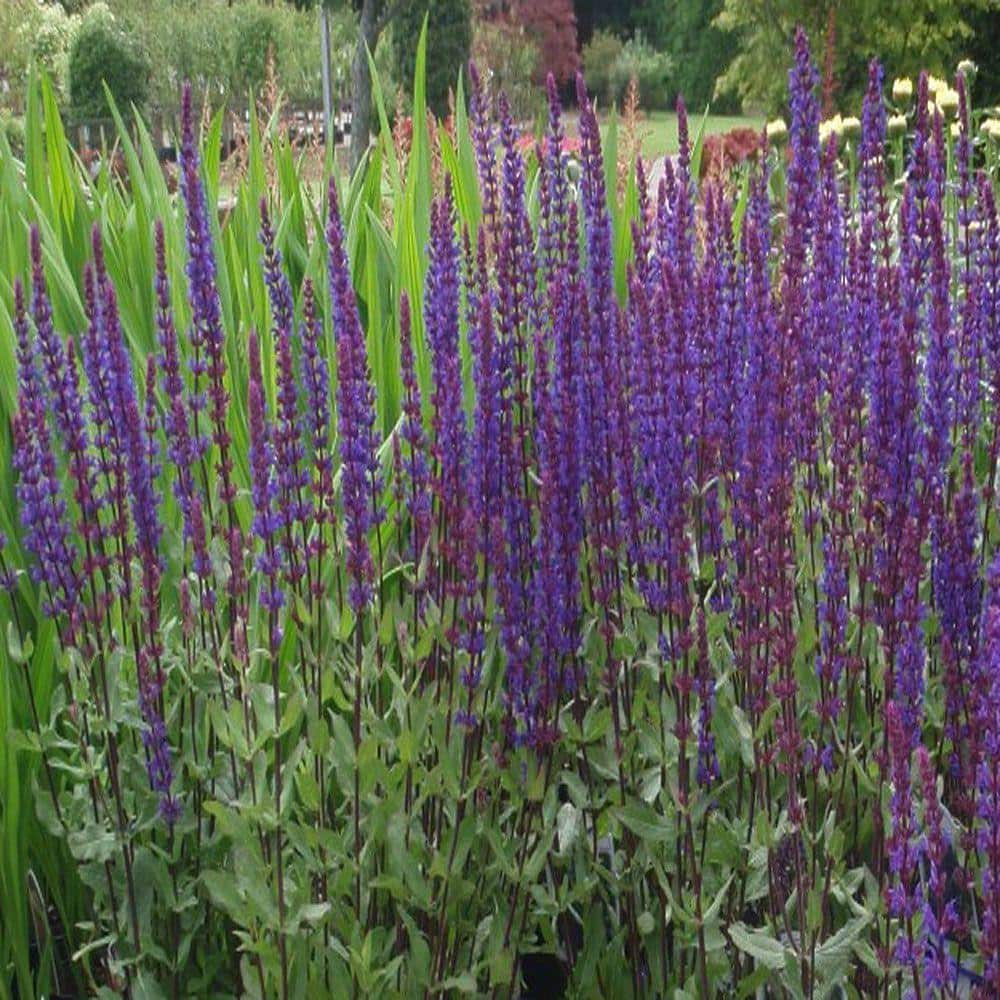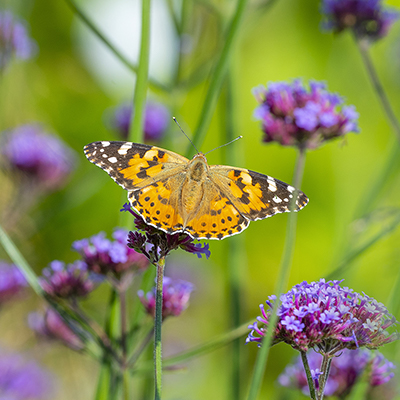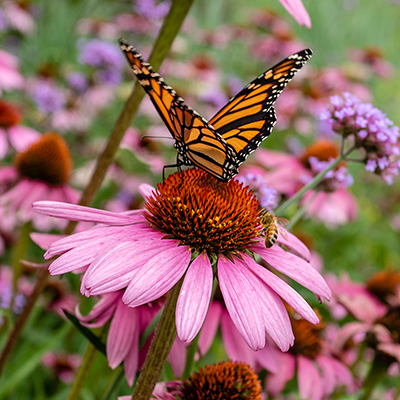5 Beneficial Insects to Keep in Your Garden

Last updated September 3, 2024
One of the best ways to keep your garden plants pollinated and healthy and also to deter unwanted insects is to invite beneficial insects.
You can plant a buffet of colorful flowers to invite good bugs to your garden. They will help pollinate your plants and keep pesky insect populations in check.
Read on to discover five beneficial insects to invite to your garden.
Table of Contents
Butterflies
Lacewings
Ladybugs
Native Bees
Dragonflies
Butterflies

The beauty of butterflies is captivating in a garden. Make sure these pollinators stay well-fed with aster, bee balm, butterfly bush, lavender, purple coneflower, zinnia and more. Better yet, plant a pollinator garden and watch what happens.
Butterflies are often fluttering around as though they have no direction or purpose. But their flight paths aren’t random. Butterflies help plants make seeds and fruit by traveling from blossom to blossom, drinking nectar and spreading pollen.
Butterflies don’t actually eat anything, though. They drink nectar and water from any source. If you see insect bite marks on your plants, it's not from a butterfly.
You can watch for butterflies throughout their four life stages. They lay their eggs on or near the food source, like on the underside of leaves, flowers or in crevices of bark. After three to five days, they hatch and become caterpillars. Then, they will spend 10 to 20 days consuming as much food as possible.
Next comes the pupae or chrysalis stage. The caterpillar spins a cocoon and lives inside for six to 12 days. It then emerges as a butterfly. Most butterflies only live for about 20 days, with the exception of the migrating Monarch butterfly, which can live up to 180 days.
Lacewings

Lacewing adults and larvae feed on aphids, whitefly larvae, mites and more. Lacewings can eat soft-bodied insects fast and are sometimes referred to as the “aphid lions” due to their ferocious appetites. Invite them to your garden with fern-leaf yarrow and dill.
Not all beneficial insects are pollinators. Some are bug eaters and lacewings do both: pollinate plants and eat bugs.
You can identify adult lacewings by their net-like wings. In the lacewings' 30-day life cycle, the egg stage lasts three to 10 days. You can find lacewing eggs at the end of long, fine stalks, leaves and twigs. Their eggs are attached to the end of fine filaments to prevent them from eating each other when they hatch. The hatched larvae crawl away in search of soft insects to eat.
After about two to three weeks, lacewing larvae spin a silken cocoon on the underside of leaves and hidden places on plants. The adult lacewings emerge in 10 to 14 days. The best time to view lacewings is during twilight.
Ladybugs

Ladybugs are among the best goodwill ambassadors for your garden. Ladybugs make pest management so much easier because they do the work for you. When you plant chives, cilantro, dill, cosmos, marigolds and yarrow, the ladybugs will start to show up.
Ladybugs or, more appropriately, lady beetles, have a long lifespan, considering their tiny size. Watch for their eggs on the underside of leaves. They look like tiny oval sacs clustered together. After three to 10 days, the larvae emerge. They will grow for about a month before they enter the pupae stage. After 15 days, the adult lady beetle emerges. It will live for up to a year feeding on smaller insects like aphids, mealy bugs and other destructive insects.
Lady beetles are such great garden helpers that they often lay their eggs among aphid eggs so the lady beetle larvae have something to eat when they emerge.
Native Bees

You can’t have too many native bees in your garden. These important pollinators help keep your garden blooming strong. To encourage them in your garden, plant brightly colored, single-petal flowers such as coneflower and daisies, as well as flowering vegetables such as squash and tomatoes.
Honey bees and bumblebees are good pollinators but it is the solitary native bees that are two to three times more effective at pollinating plants. A female native bee will gather pollen and nectar, build her nest and lay her eggs alone. Native bees usually live in hollow branches, logs and stems or underground in tunnels or burrows.
Sweat bees, carpenter bees, mason bees and leaf-cutter bees are all common species of native bees. Most have a short adult life span. They use their time wisely and work in a small area, gathering pollen and building their nests. Their eggs hibernate over winter in the cocoon in their nests.
Dragonflies

When you invite dragonflies, they’ll help cut down on the mosquito population and take care of aphids for you, too. Attract dragonflies by planting a rain garden under your rain chain. They are also attracted to ponds with water-loving plants like water lilies, swamp milkweed, cardinal flower, water lettuce and blue irises.
Dragonflies and damselflies are known collectively as odonates. They were some of the first insects to inhabit planet Earth. The two look similar, but dragonflies have thicker bodies and eyes that are closer together.
Odonates have had millions of years to perfect the art of hunting. They eat gnats, mosquitos, biting flies and other small insects.
They lay their eggs underwater. The larvae can live for up to two years underwater. They will eat other larvae, small fish and tadpoles. After molting up to 17 times, they will emerge from the water as adult dragonflies.
Odonates can live for up to six years. Some species can fly for 11,000 miles across the ocean.
Make your yard a welcoming place for five beneficial insects to keep in your garden. They can help pollinate plants and control pests. You might spot these five insects in their egg, pupa, nymph and adult stages.
Ready to find plants and supplies to attract insects that will benefit your garden? The Home Depot delivers online orders when and where you need them.
































